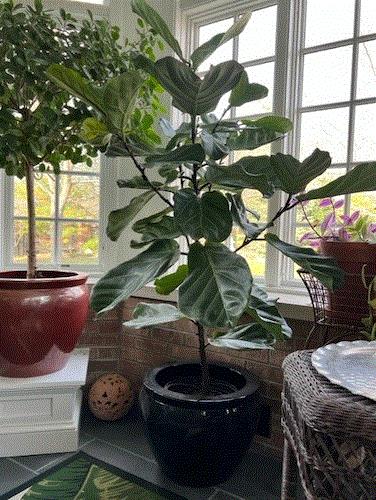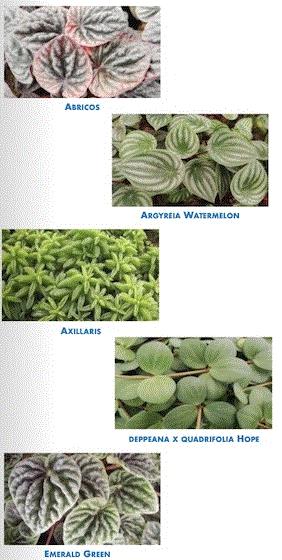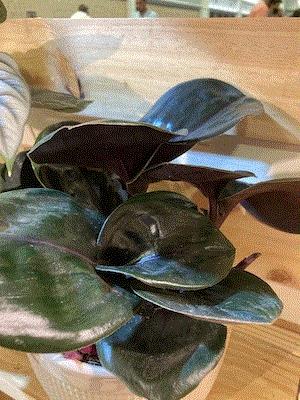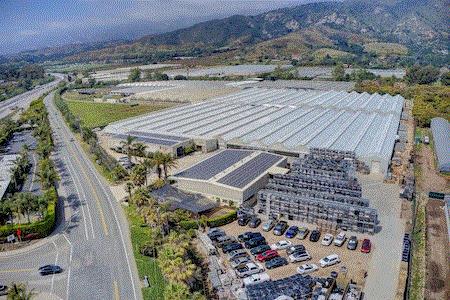Long Live The “It” Plant
The title of The New York Times’ article—“The Fiddle Leaf Fig Is Dead”—is what drew many in our industry to click over to the Times’ Sunday Styles section, a place many of us rarely tread. That title is nearly as contentious a title as my “Foliage Is Tanking” header in Buzz last December. Saying the fiddle leaf fig is dead is the equivalent of saying, “Pick me, pick me!,” with the clear intention of drawing the attention of folks who had much moola on a green thing that is now suddenly off trend. The title is an attention-grabber for a piece that doesn’t actually throw the fiddle leaf in the dust bin with the ghosts of It Plants past. “In spite of the clickbait headline,” Bossman Beytes wrote in an internal email, “the fiddle leaf fig is FAR from dead, of course. It will remain one of the most versatile indoor plants, as you can grow it to any size and shape.” That is, it’s still a great plant with winning qualities, despite what the Times has to say about it.

Chris Beytes’ fiddle leaf fig is living its best life.
So, what argument does the article’s author make for the demise of this workhorse of a houseplant? If you read the article in full (does anyone do that anymore?), the author takes nine paragraphs to actually mention the fiddle leaf fig by name. And when it does appear, it’s in a list of other former “it” plants like Pilea peperomioides, the Raven zz plant and the Birkin philodendron. And there was some mention of Ficus lyrata being harder to care for than it looks. You can say that about a lot of things.
“We don’t just need a new plant,” Costa Farms’ plant-hunting Mike Rimland says in the article, “we need one that’s different.” Truer words, right? In the article Dr. Charlie Hall explains this sentiment with an example from the ornamentals industry: “I don’t just have a hydrangea. I’ve got an Endless Summer hydrangea. It blooms all summer long. I think the houseplant category in itself is just now catching up to that phenomena.” It’s almost as if the consumer is saying, “I like this plant, but what else ya got?”
So don’t worry, the fiddle leaf fig is not dead. Houseplant popularity, to my mind, is like a never-ending horse race with horses jockeying in and out of the lead. But the race continues. Heck, this particular race started back in the 1970s.
Your thoughts on this topic? Oh, I know you have some. Drop me a note about it at ewells@ballpublishing.com.

Houseplant Faves Have Staying Power
Spoiler alert: I have had early access to John Friel’s column in the May issue of Green Profit, and it’s about the come-around-again character of houseplants. Many of the houseplant stalwarts that John hawked as a wee-lad rep back in the ’70s are on the top lines of grower availabilities today. He’s spotted many of them recently in articles in well-known shelter magazines. “Nearly everything listed,” John wrote, “was indistinguishable from something I’d delivered to retailers in the late 1970s and early ’80s: Spider plants, peace lily, aloe vera, philodendron, crassula, pilea, peperomia, bromeliads, even (shudder) English ivy, which is rightfully banned in some states.” But, he continues, a bit more digging reveals that breeders are hard at work, producing nifty alternatives in collections such as Dümmen’s Welcome to the Jungle program, which I mentioned to y’all in my last Tropical Topics.
Which leads me to a reminder that there are breeders and growers that have been at this for decades. Jos De Boer wrote in last week to say, “Thanks for writing about these product lines, they have been ignored for quite some time and it is interesting to see the attention they are getting over the last two to four years!” And by product lines, Jos was referring to Peperomia, Tradescantia and a whole host of the tried-and-true houseplants that ForemostCo has been introducing for 30 years. “ForemostCo has had these tropical plants available for years, and will continue to serve the grower community with tropical foliage programs for the future,” Jos wrote. “It’s always good to see something (finally) catching on to expand the category and increase interest for the final consumer.”

Some of ForemostCo’s peperomia assortment.
Interested in some other foliage items? Flip through ForemostCo’s flip-book catalog HERE.

Seeking Maximalist Plants
Back to that “it” plant article for a moment. The author tells a bit of the story behind Mike Rimland’s sighting of Geogenanthus ciliatus, which he spotted while on a trip to Southeast Asia. You may be familiar with “Geo,” as it won the Best New Foliage Plant at the 2022 TPIE. Sleek and mod, don’t you think? It’s what I’d call the perfect plant for the minimalist look.

Geogenanthus ciliatus on display at the Costa Farms booth at TPIE 2022.
And that reminds me about a Gen Z trend I just read in a recent edition of a Morning Brew e-newsletter. The piece (which I mentioned in last week’s Buzz e-newsletter) sees “maximalism” as the latest trend reshaping retail, especially when it comes to packaging. Gen Z consumers are looking for products with “attitude and personality,” the article says. One of the interesting points here, and it harkens back to when houseplants were a big deal back in the 1970s, is that fonts that are on trend now are typefaces with “expressive, flashy, super-high contrast, tight spacing, weird proportions, mismatches and ’70s psychedelic shapes.” What’s old is new again, right? This time with a completely new generation.
My question to you is this: With the minimalist look of, say, a rubber plant in a sleek white pot, on the way out with the Gen Zers—our largest subset of consumers to date—what maximalist-looking houseplants can we expect to start grabbing the limelight? What are your ideas for maximalist plants, maybe not just with color but with textures, too? Are asparagus ferns to the max? (I just adopted one, and I’m getting quite fond.) Drop me a note about the plants you think appeal to the maximalist-seeking Gen Zer. Let’s get a list going!

Hey, It’s Earth Day
Well, later this week it’ll be Earth Day. In recognition of the day that brings awareness to and celebrates the health and wealth of our planet’s many ecosystems, I want to mention an eco-friendly project that Westerlay Orchids recently completed. The California-based operation has installed more than 560 solar voltaic cells. These are expected to generate about 320 kWh per year at the company’s primary location, which covers 30,000 sq.ft. of greenhouses. And better yet, this should cover 100% of all the electricity the facility will need to operate. They plan on installing more solar panels throughout the year.

(On a personal note, I purchased a condo with solar panels back in ’12, and with the energy it generates combined with solar credits, I actually make about $500 over the course of the year. As I tell folks, there’s a big ball of energy in the sky for a good many hours each day. It’s smart to put it to work.)
Westerlay Orchids is also taking further steps to reduce its carbon footprint. Those steps include:
Energy Curtains: Westerlay is replacing and insulating energy curtains in more than 650,000 sq.ft. of greenhouses. This is estimated to save 55,000 BTUs of natural gas used for heating.
Offsetting Emissions: Through Carbon Footprint Ltd., Westerlay is offsetting carbon emissions by 2,399 tCo2 through direct financial support to construct a wind power facility in Tamil Nadu, India. Since 2019, Westerlay has worked with Carbon Footprint, a third-party verification service, to measure carbon emissions and determine their strategy for reduction.
These projects build on previous eco-conscious efforts, such as the installation of a 300,000 sq.ft. irrigation water recycling catch system. Not only does this reduce water use (by upwards of 38%!), but it also reduced natural gas usage by 11% because the air in the greenhouse was drier and required less heat to maintain temperature and humidity. Every percentage in reduction counts!
“We benchmark ourselves against thousands of other horticultural companies worldwide, and this allows us to compare fertilizer, water, fossil fuel and pesticide use to our peers,” said Westerlay president Toine Overgaag of these efforts. “In the subset of orchid growers, we are graded at the head of the class for all categories and have achieved an ‘A’ for every year we have been part of MPS.”
Westerlay isn’t the only houseplant/tropicals grower making strides to reduce environmental impacts (and lower operating costs while they are at it). Have you installed or retrofitted something that’ll help save the planet and some money at the same time? Drop me a note about it to ewells@ballpublishing.com.
Comments, questions or news to share? Just drop me a line at ewells@ballpublishing.com.

Ellen Wells
Senior Editor
Green Profit
This edition of Tropical Topics was sent to 29,367 loyal readers!
If you're interested in advertising on Tropical Topics, contact Kim Brown ASAP!